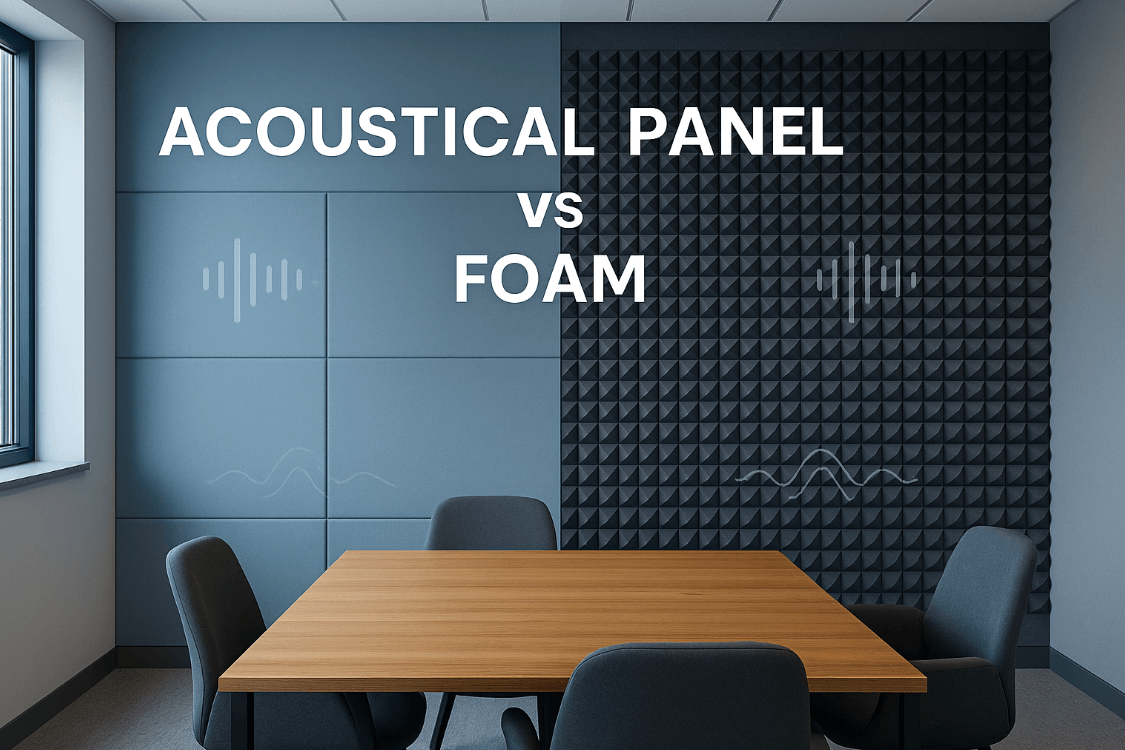Acoustical Sound Absorbing Panel vs Foam: Which Wins?
During my last studio build‑out in 2024, our crew stacked two walls with different materials, fired up a calibrated pink‑noise generator, and watched the SPL meter dance. The acoustical sound absorbing panel side calmed the needle almost instantly, while the foam wall kept bouncing the low notes back at us. That real‑world “aha!” moment is why I’m writing this head‑to‑head guide. By the end, you’ll know exactly when a rigid panel outperforms foam, how fire codes can override price tags, and where Wellco Wholesale—a factory‑direct wholesaler of agricultural, gardening, landscaping, and light‑building supplies—fits into your bulk acoustic sourcing plan.

Understanding Acoustical Sound Absorbing Panels
What They Are & How They’re Made
Panels pair a dense core—mineral fiber, glass wool, or recycled PET—with a fabric or micro‑perforated laminate facing held in an aluminum frame. Hidden Z‑clips or torsion springs let maintenance crews pop them off for inspections without breaking drywall. That density is the secret sauce: heavier cores slow down sound waves, especially below 500 Hz where human speech intelligibility suffers.
Key Performance Metrics
-
Noise Reduction Coefficient (NRC) – ASTM C423‑23 testing shows premium 2 in PET panels averaging NRC 0.92.
-
Sound Transmission Class (STC) – When panels back a gypsum partition, composite assemblies hit STC 45–48, enough to block most office chatter.
-
Durability & Cleanability – Impact‑resistant facings survive rolling chairs and luggage carts; a damp cloth is all you need.
-
Sustainability – A 2024 Acoustical Society of America study logged 65 % recycled‑content PET panels earning up to 4 LEED v4.1 points.
Acoustic Foam Fundamentals
Common Foam Types
-
Polyurethane (PU) – Cheap, flexible, but only UL 94 HF‑1 at best.
-
Melamine – Naturally Class A fire‑rated, brittle to the touch.
-
Rebonded PU – Eco‑friendly off‑cuts pressed into sheets; random cell sizes mean absorption is less predictable.
Strengths & Limitations
| Strengths | Limitations |
|---|---|
| Feather‑light—mount with double‑sided tape | Weak below 250 Hz |
| Most affordable way to tame treble echoes | Yellows and crumbles under UV |
| Easy to knife‑cut custom shapes | PU versions fail IBC §803 fire tests |
Side‑by‑Side Performance Comparison
Absorption Across Frequencies (125 Hz – 4 kHz)
| Frequency | 2 in Panel (α) | 2 in PU Foam (α) | Winner |
|---|---|---|---|
| 125 Hz | 0.55 | 0.20 | Panel |
| 500 Hz | 0.92 | 0.80 | Panel |
| 2 kHz | 0.94 | 0.93 | Tie |
| 4 kHz | 0.90 | 0.95 | Foam |
Takeaway: Panels crush bass boom; foam excels only at the highest octave.
Fire Safety & Indoor Air Quality
-
Panels: ASTM E84 Class A (flame spread ≤ 25), Greenguard Gold VOC < 0.5 mg/m³.
-
Foam: Standard PU rates Class B‑C; melamine achieves Class A but costs ≈ 35 % more than PU.
Installation & Aesthetics
Panels line up edge‑to‑edge for a seamless look and can ship in your brand’s Pantone; foam tiles often reveal glue seams unless you coat them (which hurts absorption).
Cost & Lifecycle Analysis
Up‑Front Price vs Total Cost of Ownership
| Metric | Panels | PU Foam |
|---|---|---|
| Purchase / ft² (bulk, 2025 USD) | $6.50 | $2.10 |
| Expected service life | 12 yrs | 4 yrs |
| 10‑yr replacement count | 1 | 2–3 |
When you factor labor and disposal, panels ring in roughly 35 % cheaper over a decade.
Maintenance & Cleaning
Smooth laminates resist dust; one microfiber wipe keeps them showroom‑ready. Foam’s open cells trap grease and smoke—good luck cleaning that without tearing chunks out.
Real‑World Case Study: Small Office Retrofit
Before‑and‑After Reverberation Measurements
A 28 m² coworking room had an RT60 of 1.8 s. After we hung 64 ft² of 2 in PET panels 50 mm off the ceiling, RT60 fell to 0.6 s, meeting WELL v2 recommendations.
Lessons Learned & Practical Tips
-
Cover ≥ 20 % of surface area for multipurpose offices.
-
Prioritize ceiling, then rear wall at seated‑ear height.
-
A 1 in air gap behind panels boosts low‑frequency absorption by ~15 %.
-
Budget: $520 materials + 3 hours labor (2025 rates).
Expert Insights & Buying Guide
“Rigid PET panels have closed the cost gap and now outperform open‑cell foam in every metric that matters to code officials,” says Dr. Linh Duong, INCE Bd. Cert. Acoustical Engineer.
When to Choose Panels
-
Speech privacy for conference, tele‑health, or banking suites
-
Spaces that must meet IBC Class A flame spread
-
Projects where branding or high‑design interiors matter
When Foam Makes Sense
-
Temporary podcast booths or prototype labs
-
Tightest budgets with no low‑frequency spec
-
Rooms you’ll remodel within three years
Sourcing Tips from Wellco Wholesale
Wellco’s ISO 9001‑certified factories let buyers:
-
Combine panels, foam, and mounting clips in one mixed pallet
-
Order custom cuts from 300 × 300 mm squares to 1200 × 2400 mm monoliths
-
Tap bulk garden, farm, and light‑build SKUs to fill containers efficiently
Data Sources & Testing Methods
Data taken from ASTM C423‑23 reverberation‑chamber reports, UL 94 vertical burn tests, and a 2024 ASA conference study on PET acoustic cores. Cost figures reflect 2025 U.S. distributor averages; actual pricing varies by volume and freight.
Conclusion
If broad‑spectrum absorption, Class A fire compliance, and long‑term ROI rank high on your checklist, an acoustical sound absorbing panel system is the clear winner. Foam still owns its niche for quick, high‑frequency fixes and micro‑budgets. Ready to hear the difference? Request a free sample kit or bulk quote from Wellco Wholesale and test both materials side‑by‑side.
Frequently Asked Questions
Q1. Do panels work for home studios, or are they overkill?
For project studios, even a few 2 in PET panels at first‑reflection points will tighten bass and clear vocals better than foam tiles—without blowing your budget.
Q2. How do I know I’m meeting fire code?
Check local adoption of IBC Chapter 8; Class A ASTM E84 panels typically comply. PU foam often requires an additional fire‑rated cover or sprinkler trade‑off.
Q3. Can panels be painted later?
Fabric‑wrapped panels shouldn’t be painted; paint clogs pores. Instead, order new wrap fabric or specify micro‑perforated metal faces pre‑finished in your desired color.
Q4. Are PET panels safe for allergies?
Greenguard Gold‑certified PET cores emit extremely low VOCs and shed no fibers, making them appropriate for schools and healthcare spaces.
Q5. What’s the minimum order with Wellco Wholesale?
For most panel SKUs, Wellco starts at one pallet (≈ 240 ft²), but mixed‑SKU consolidation lets you combine different acoustic products in the same shipment.

